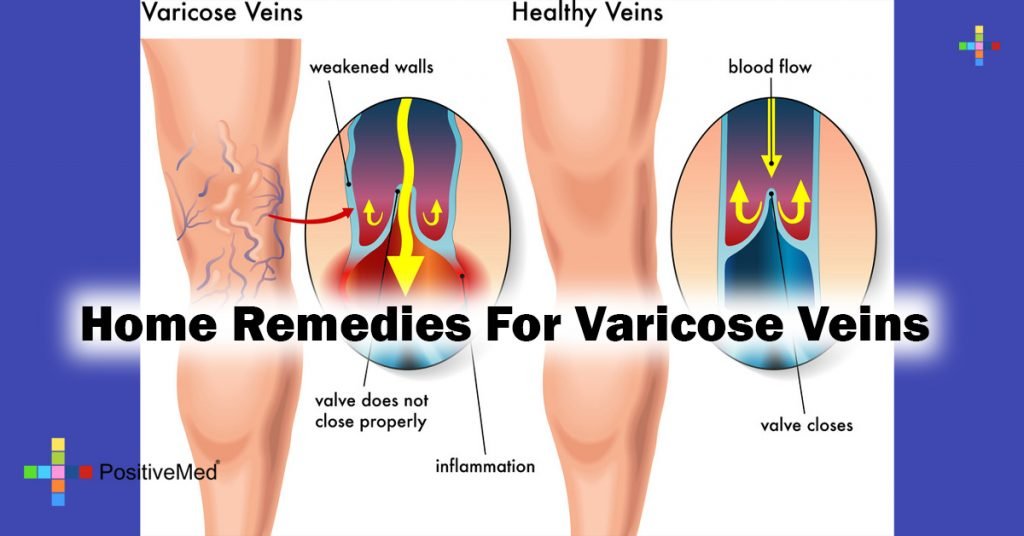
Home Remedies For Varicose Veins
Varicose veins are veins that are abnormally enlarged and appear close to the surface of the skin. They are the result of malfunctioning valves inside the veins as prolonged pressure or obstruction of the veins, they usually develop in thighs and calves. They often occur in those who stand or sit for extended periods of time, poor exercise, pregnancy, and prolonged constipation. People who often sit with their legs crossed are more prone to it.

Home remedies are often recommended for varicose veins. Here are some natural approaches to treat your veins and lower your discomfort:
1. ExerciseGet moving and exercise to lessen symptoms of varicose veins. Walking is the best way to improve the circulation in your legs. Perform exercises that involve leg movements, ride a bike, join aerobic classes, or use a stair machine, this will prevent blood from clotting. Take your doctor’s advice on appropriate level of activity for you.
2. Eat a balanced dietEating properly will help you gain essential nutrients that prevent varicose veins. Choose a low-sodium diet that prevents swelling caused by water retention. Eat foods rich in vitamin C and protein, they help build collagen which is needed for tissues in veins and valves. This keeps collagen in good shape for making tissue more resilient. Include fresh fruits, whole grains, and vegetables in your diet.
3. Lose weightBeing obese can make you less active which results in less movement of leg muscles, there is also farther for the blood to travel, which makes circulation an inefficient process. Moreover, blood vessels in overweight people carry more blood than those of thinner people, so more strain is on the vessels themselves.
4. Watch your clothes and shoesAvoid high heels, choose low-heeled shoes with good support. Flat shoes make calf muscles work harder which is better for your veins. Sports shoes or other lace-up shoes that can be opened to alleviate pressure and allow better circulation of blood are a good choice. Avoid tight clothing around your waist, groin, or legs. Tight panty-leg girdles can stop blood flow.
5. Elevate your legsIf your job includes sitting continuously for hours, take short breaks to improve circulation. Walk around your area to get blood pumping. You can also lie down with your legs resting on a pile of 3 or 4 pillows to use gravity to pump your blood from your legs to your heart. This will also help alleviate swelling and leg pain.
6. Avoid standing or sitting for long hoursTry to move every 30 minutes if your job requires sitting or standing for long hours to encourage blood flow. If you’re travelling in a car or plane get up and stretch your legs once in a while to help loosen your muscles. Avoid sitting with crossed legs as this position creates circulation problems.
7. ReflexologyReflexology primarily works on your feet. In a small study reflexology was compared in 55 pregnant women and it shows that reflexology reduced leg swelling. Some experts say reflexology should not be done during the first trimester. Pregnant women should consult their doctors before opting for reflexology.
8. Check your seatIf your seat is too deep for your leg length it can cause circulation problems, the front edge of the chair digs into the back of your knees, compressing blood vessels and restricting blood flow. Choose a chair that suits your body, if that’s not possible scoot your backside away from the back of chair until the pressure on your legs is relieved.








